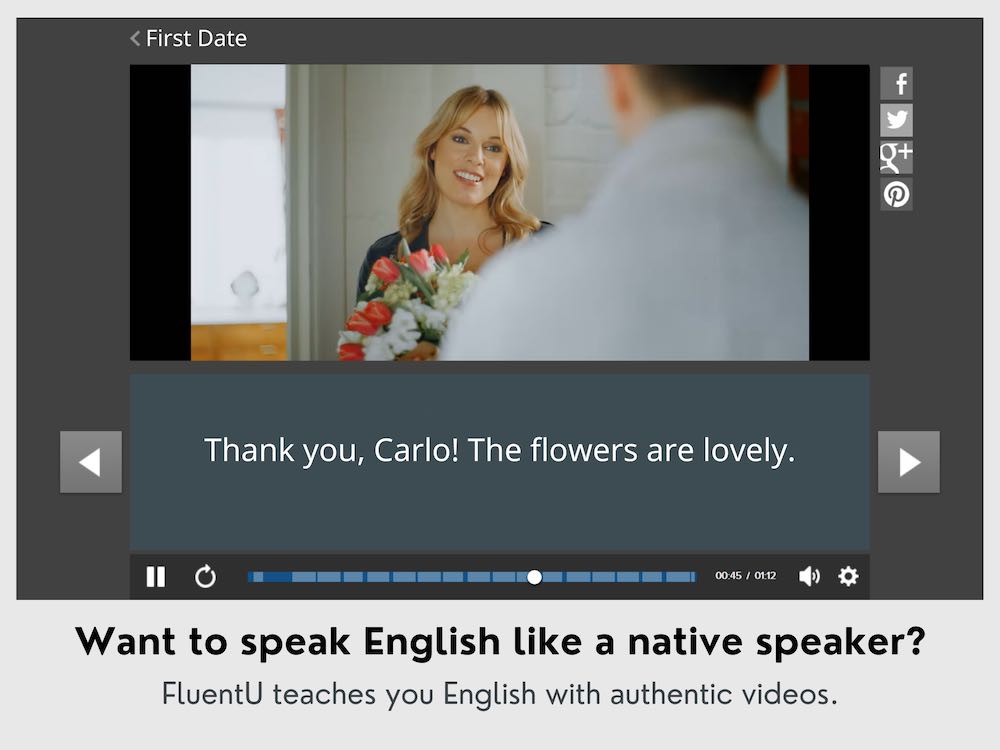
How to Order Food in English
Even after all your conversational English practice, ordering something to eat (and drink) can still be a challenge.
You need specific vocabulary and expressions to succeed.
Here, you’re going to learn how to place orders for food, say the same sentences in a variety of different ways and sound more casual or more formal depending on your situation.
Contents
Download: This blog post is available as a convenient and portable PDF that you can take anywhere. Click here to get a copy. (Download)
Ordering Food in English
Ordering for Yourself
Being polite goes a long way in any language.
When most native speakers order something, they don’t say “I want ___“, because it can seem impolite. Instead, they’ll ask the following phrases. All of these are questions or requests, so they sound less demanding:
Can I get a cheeseburger, please?
May I have a glass of iced tea, please?
Do you have any salad options?
Can I order a medium-rare steak?
I would like to order… please.
I would like to order a strawberry cheesecake, please.
Especially when talking to strangers, you want to sound more passive (casual and polite). If the answer to your request is “no” for any reason, you can quickly change your mind and say something like, “Oh, alright. Then can I have an Americano, please?” (Americano is a coffee drink made from espresso and hot water.) The reply will usually be something like, “Yes, you can. Anything else?”
Ordering for a Group
A lot of times, you’ll have to order food for a group, whether everyone’s getting separate meals or you want to share the same food with several people. Here are some phrases that you can say:
We will have… to share, please.
We will have the seafood platter to share, please.
This is for ordering the same dish as a group.
I would like the… and she will have…
I’ll have the lasagna, and she will have the spaghetti and meatballs.
On the other hand, if you’d like to have individual orders, you’d use this phrase!
Can we order four servings of chicken tortilla?
Sometimes you might want to order more than one serving of a dish so more people can try it.
Can we get a glass of water for each person?
This is for requesting the same food or drink for each person. You’d usually say this for drinks or side dishes like salad, rice, soup or dessert.
Is this… for one person or for sharing?
Is this bread pudding for one person or for sharing?
Sometimes it’s unclear from the menu if a particular dish is meant to be shared or eaten on your own, so you can ask directly.
Once you’re done ordering, they’ll usually go over your order again to confirm they understood your order right—make sure to pay attention to the number of servings!
Ordering to Go
If a place says that they have takeout, they’ll probably ask you if your order is for here or to go . If they don’t ask you that, make sure you tell them what you want before paying. (Some places charge different amounts depending on which one you choose.)
If you want to eat in, you simply say, “for here” or “for here, please.” .
For taking food with you outside, to go is usually used for both drinks and food, while takeout (in the US and Canada) or takeaway (in the UK) is only used for food. To go is far more commonly used by English speakers.
When you want to order your food and take it with you, there are a few options.
Can I get these to go? I’d like a sausage and egg sandwich and an iced coffee.
If you’re ordering several items, you can state first that you’d like to order them to go.
I’d like the fish tacos to go, please.
Only ordering one or two items? Then you can say it in one sentence.
Could I get… for takeout, please?
Could I get the Hawaiian pizza for takeout, please?
Can I have the shrimp tempura roll? Takeout.
More Phrases for Ordering Food
Here are some more useful phrases for common situations and conversations when dining out:
Does this dessert have any dairy?
Whether you’re following a specific diet or you have food allergies, this is a very handy phrase to know. For example, you can ask if a menu item has meat, eggs, dairy or peanuts.
Is it possible to replace… with…?
Is it possible to replace the white rice here with brown rice?
If you’re allergic to a specific ingredient or you simply have a different preference, you can ask about using a different ingredient.
Most places already have vegetarian (meat-free) or vegan (no animal products) options. Even if the food you’re asking about isn’t vegetarian or vegan, they’ll likely point you to other choices in the menu that fit.
Can I get extra sauce, please?
You might ask for extra condiments, sauce or even toppings—for example, cheese, salsa, sour cream, nuts or whipped cream.
What would you recommend? / What is the house specialty?
If you can’t decide, you can ask the waiter to point you to the most popular dishes instead, which are usually a safe choice.
Excuse me, but… Could you please replace this?
Excuse me, but this isn’t what I ordered. Could you please replace this?
Your food might have turned out wrong—maybe they gave you the wrong order, it’s served cold or undercooked or you even found a strand of hair in it. Either way, with this phrase, you can explain the reason and then request for a new dish.
Excuse me, we’ve been waiting for a while. is there an update on our order?
During peak dining hours, the food might take longer than expected to arrive. If it’s taking too long or you’re worried they might have forgotten your order, you can follow up politely with this.
Use this if you want to get more of your drink. This usually works for free drinks, like water, tea or soda. It can also work with complimentary bread, salad or soup, depending on the place.
Can I have a knife / spoon / fork, please?
Sometimes you might need extra utensils—don’t hesitate to ask! You can also request for an extra plate, bowl, glass, chopsticks or napkin—pretty much anything you’re using on the table.
When you’re ready to pay, you can ask for the bill, also known as a check in the US. Remember to leave a tip because it’s a custom in many English-speaking countries!
In the US and Canada, this is usually at 15% to 20% of the total bill, while in the UK, it’s a bit lower at around 10%. On the other hand, tipping in Australia and New Zealand is a lot less common, so it’s up to you.
If you don’t want to pay by cash, credit card payment is often allowed.
We’re going to split the bill.
Sometimes you might want to pay separately even when eating as a group. By saying this, the waiter will give you separate bills for more convenient payment.
I hope these phrases will help you next time you’re ordering in English.
To hear how native speakers order food, I recommend listening to actual English speakers at your local restaurant. No English speakers near you? No problem, you can find videos on YouTube and authentic programs like FluentU.
FluentU takes authentic videos—like music videos, movie trailers, news and inspiring talks—and turns them into personalized language learning lessons.
You can try FluentU for free for 2 weeks. Check out the website or download the iOS app or Android app.
P.S. Click here to take advantage of our current sale! (Expires at the end of this month.)

Remember, it’s more about the way you say things (your tone) than the words themselves. When said in a light tone with a smile, anything will seem more polite and natural. Also, remember to speak loudly and clearly in any food or drink environment, so that the employees can understand you.
Check out this post next:
90+ English Restaurant Vocabulary Words and Phrases for the Best Dining Experience | FluentU English Learner
Learn over 90 English restaurant vocabulary words, phrases, sentences, questions and more! Read this post to know what to say in every part of the meal, from making a…
Download: This blog post is available as a convenient and portable PDF that you can take anywhere. Click here to get a copy. (Download)
And One More Thing...
If you like learning English through movies and online media, you should also check out FluentU. FluentU lets you learn English from popular talk shows, catchy music videos and funny commercials, as you can see here:
The FluentU app and website makes it really easy to watch English videos. There are captions that are interactive. That means you can tap on any word to see an image, definition, and useful examples.
For example, when you tap on the word "searching," you see this:
Learn all the vocabulary in any video with quizzes. Swipe left or right to see more examples for the word you’re learning.

FluentU helps you learn fast with useful questions and multiple examples. Learn more.
The best part? FluentU remembers the vocabulary that you’re learning. It gives you extra practice with difficult words—and reminds you when it’s time to review what you’ve learned. You have a truly personalized experience.
Start using the FluentU website on your computer or tablet or, better yet, download the FluentU app from the iTunes or Google Play store. Click here to take advantage of our current sale! (Expires at the end of this month.)











